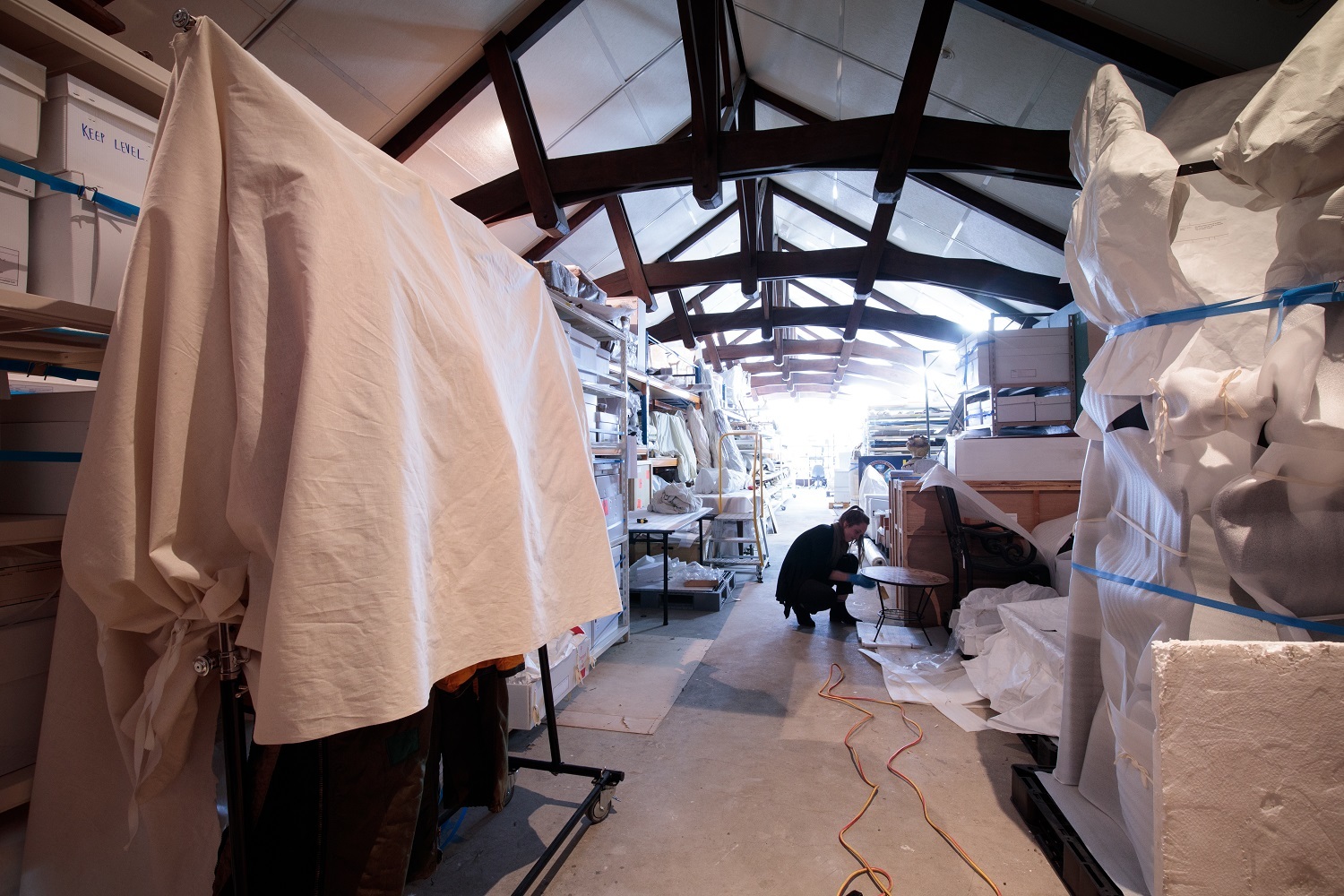With a collection numbering over two million objects, the Canterbury Museum buildings on Rolleston Avenue contain almost as much dedicated storage space as public exhibition space within their many walls.
Some of the storerooms at the Museum are exclusively for particular types of collections. For example, the Pinned Insect Room only has pinned insects in it. Most of the rooms have a mix of objects in them and some have a bit of everything.

Ask the Collections Team at the Museum what their favourite storerooms are, and the one called Mammal Attic will get quite a few mentions. It is located directly above the Ngā Taonga public gallery. Both spaces were originally one high-ceilinged gallery, but in the late 1980s the space was divided into two storeys by an earthquake strengthening diaphragm floor. The Mammal Attic occupies the top half, secretly guarding the exposed, solid wood beams of the original ceiling.

As the name suggests, the room contains some taxidermied mammals. But it also contains so much more. It has become the storage space for a diverse collection of objects with very different origins and stories. The combination of these objects with the low-hung beams gives the space an aura of a Victorian room of curiosities, although until recently an Antarctic snowmobile sat just inside the doorway, messing with the illusion.
A few years ago, a group of about 25 staff members carried out a lightning-fast inventory of the Mammal Attic for an earthquake insurance claim. It took a few hours and beforehand, we all guessed how many objects we thought may be stored there. The collection database for the store room was incomplete and the Inventory Team hadn’t yet been through. The range of the 25 estimates was vast, from a few thousand to 200,000 objects.

At the end of the morning we had a total of around 7,000 objects – much lower than the majority of the group had thought there would be. A couple of years later when the proper inventory was held (taking over 7 months), the total also came in at around 7,000 – surprisingly close to the 3 hour speed through.
Besides the snowmobile, there are many other objects in the Mammal Attic that have spent time in Antarctica. One of the highlights for the Inventory Team when they went through the store a couple of years ago was finding a small vial half full of water labelled as Snow from the South Pole – sadly, no amount of conservation effort is going to restore this to its original form!

Other Antarctic-related objects include an array of cooking and eating utensils, dried food items, bits of huts and hut furniture, signs and even taxidermied huskies from dog-sledding days (fitting in nicely with the mammal theme).
Sitting alongside Antarctic hut furniture are examples of everyday household furniture, mostly from the nineteenth century. There are some later pieces, however, including the funky modern bedroom suite built in Christchurch in the 1950s by George Templeton. The curving Art Deco lines of the Coleridge suite introduced a different style for post-war New Zealand and initially met with some buyer hesitancy. It continues to stand out in the Mammal Attic, surrounded by colonial style chairs and tables.

Another surprise for the Inventory Team was the number of pianos – 11 in total, though I should mention that three of them are miniature props for puppet theatre.
If you thought that Fred and Myrtle’s Pāua Shell House couldn’t have fitted in any more than what is already displayed, you’d be wrong; the Mammal Attic contains boxes of other objects that were in the original house, including more pāua shells. Other objects in the Mammal Attic include the figurehead of the ship Derry Castle, a cast of an Egyptian statue, a purse made from the foot of a penguin, racks of skis and poles and, of course, the mammals.

You may have recently read about the elephant in the attic, but it is not alone. Tucked into a back corner of the Mammal Attic, a silent menagerie of around 170 taxidermied mounts and skins of mammals, birds and fish, huddle together. Gazing out from the group, a couple of taxidermied kekeno (New Zealand fur seals) sit side by side, representing New Zealand’s native animal population. The rest are exotic species collected from around the globe. One of the rarer specimens is an articulated skeleton of the now extinct Thylacine (Tasmanian tiger).

Another group includes hunting and fishing trophies of introduced species collected in New Zealand such as tahr, possums and trout. One of the fish, a brown trout, came from near the Museum – a note describes it as an escapee from the Acclimatisation Society’s grounds on the other side of the Botanic Gardens, recaptured in 1874 after 7 years on the run in the Avon River.

So, next time you wander through the Bird Hall, you won’t need to wonder what is behind the big wooden doors in the corner – you’ll know that there is an elephant in there, amongst many other things. And when the Museum's proposed redevelopment goes ahead and the plan to reveal the original tōtara beams and ceiling in a public space is realised, you will know when you see it that, for a few decades, a miniature mammal menagerie was housed underneath it.





